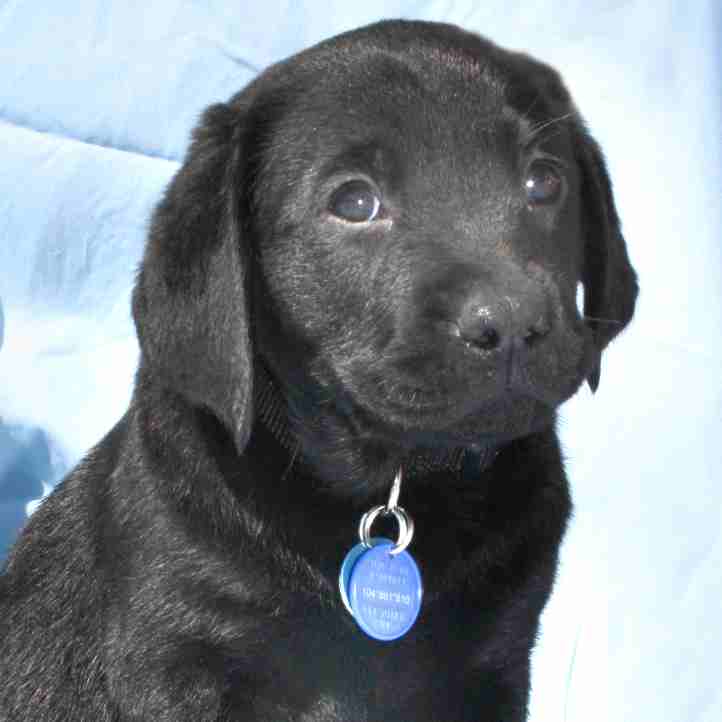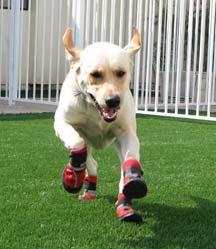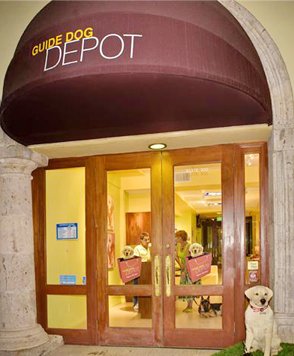|
|
 Do you drive with your pet? Do you drive with your pet?
Although driving while text messaging or talking on the phone is
getting a lot of attention, pets can also be a common source of driver
distraction.
The worry isn't just about an unrestrained animal contributing to
unsafe driving or an accident. During a crash, a flying dog or cat
represents a serious hazard to everyone in the car. The pet advocacy
group Bark Buckle UP notes that in a 35-mile-per-hour accident, an
unrestrained 60-pound dog would carry the force of a 2,700-pound
projectile.
Unrestrained dogs and cats can impede rescue workers in
more serious accidents, and they also are more likely to be harmed or
even thrown from a vehicle in minor fender benders.
The Humane Society of the United States
notes that dogs don't have to be locked up in a carrier while in the
car to keep them safe. If a dog enjoys the ride, the Humane Society
suggests a restraining harness that can be purchased from a pet store. The Web site for Bark Buckle UP
lists several products for traveling with your dog, including a mobile
pet bed or a dog seat belt. The Humane Society also advises keeping a
dog in the back seat because front-seat air bags pose a hazard to even
large dogs.
Because cats are typically uncomfortable riding in a car or being
restrained, it's best to keep them in a pet carrier that is also
strapped in with a seat belt.
|
|
Top 10 Paw Care Tips
 Your dog's feet sure are made for walking, but did you know they are also made for protecting? Pads provide extra cushioning to help protect bones and joints from shock, provide insulation against extreme weather, aid walking on rough ground and help protect tissue deep within the paw. With all that work to do, it's no wonder your pooch's paws often take a bit of a beating. Keep a spring in your pet's step with our top 10 paw care tips: Your dog's feet sure are made for walking, but did you know they are also made for protecting? Pads provide extra cushioning to help protect bones and joints from shock, provide insulation against extreme weather, aid walking on rough ground and help protect tissue deep within the paw. With all that work to do, it's no wonder your pooch's paws often take a bit of a beating. Keep a spring in your pet's step with our top 10 paw care tips:
Pamper With Pedicures: Your dog's nails should just about touch the ground when she walks. If her nails are clicking or getting snagged on the floor, it's time for a pedicure. Ask your veterinarian or a groomer for advice about what types of nail trimmers are best for your dog and how to use them properly.
Snip and Trim: Trim paw hair regularly to avoid painful matting. Simply comb hair out, especially from between the toes, and trim even with the pads.
Clean In Between: Foreign objects can become lodged in your dog's pads. Check regularly between toes for foxtails, pebbles, small bits of broken glass and other debris. These pesky items can usually be removed with a pair of tweezers.
Moisturize, Moisturize, Moisturize: A dog's pads can become cracked and dry. Ask your veterinarian for a good pad moisturizer and use as directed. Avoid human hand moisturizer, as this can soften the pads and lead to injury.
Deep Paw Massage: Similar to giving a human hand massage, a paw massage will relax your dog and promote better circulation. Start by rubbing between the pads on the bottom of the paw, and then rub between each toe. Your dog will be forever grateful for the extra TLC!
Slow and Steady: If you're about to begin a new exercise program with your dog, start off slow. Paws may become sensitive, chaffed or cracked, particularly when starting your dog out on hikes and runs.
Apply First Aid: It's not unusual for dogs to suffer cuts or other wounds from accidentally stepping on glass, debris or other objects. Wounds that are smaller than a half inch in diameter can be cleaned with an antibacterial wash and wrapped with a light bandage. For deeper paw cuts, see the vet for treatment.
Summertime Sores: Imagine stepping barefoot on to hot pavement. Ouch! It is important to remember your dog's paws feel heat extremes, too. To prevent burns and blisters, avoid walking your dog on hot pavement or sand. Signs include blisters, loose flaps of skin and red, ulcerated patches. For minor burns, apply antibacterial wash and cover the paw with a loose bandage. For serious burns, visit your vet immediately.
Wintertime Blues: Winter is hard on everyone's skin, even your dog's! Bitter cold can cause chapping and cracking. Rock salt and chemical ice melters can cause sores, infection and blistering. Toxic chemicals can also be ingested by your dog when he licks his paws. After outdoor walks, wash your dog's paws in warm water to rinse away salt and chemicals. You may wish to apply Vaseline, a great salt barrier, to the foot pads before each walk-or make sure your dog wears doggie booties.
Practice Prevention: To reduce the risk of injury, keep your home and yard clear of pointy bits and pieces. Be conscious to avoid hazards such as broken glass and other debris when walking your dog.
Keep this simple tip in mind - if you wouldn't like to walk on it barefoot, neither will your dog
|
Dog Exercise
Because summer is upon us, please take a moment to read these exercise tips, paying close attention to the swimming tips. Here is a link from the ASPCA about exercise with your dog.
In addition, many of us have salt water pools, and remember that salt water is not good for your pets.
The affects of salt water on your dog.
Salt water dehydrates your dog. Salt water has an osmotic effect, pulling liquid into your dog's intestines. This can cause diarrhea, which contributes to dehydration. If your dog drinks too much salt water too fast, he could vomit, leading to further dehydration. Even if your dog doesn't actually drink salt water, he can ingest small amounts by handling salt-water-soaked balls and toys or by swimming in salt water.
If at the beach, sand ingested with salt water can exacerbate the effects of the salt water itself, as it can irritate the lining of the intestines. Bacteria, algae, or other microorganisms or toxins in the water can cause more severe symptoms later on and possibly death.
Side Effects of Drinking Salt Water - If your dog drinks too much salt water quickly, he'll probably vomit it back up. This contributes to dehydration, so you should offer your dog clean, fresh water to drink. If your dog drinks a smaller amount of salt water, he might succumb to the phenomenon known as "beach diarrhea." This type of diarrhea occurs because the salt water has caused excess amounts of water to accumulate in your dog's intestines, as discussed above. Beach diarrhea has the following characteristics: A liquid consistency, urgency and frequency, causes your dog to strain to evacuate, contains blood or mucous.
How to Keep Your Dog from Drinking Salt Water: Discourage your dog from drinking salt water by offering clean, fresh water frequently while on the beach. Carry a small bowl or collapsible dish for this purpose; ideally, the container should be one your dog is familiar with. If you don't have a container or your dog won't drink willingly, use a water bottle with a sports cap to squirt fresh water into your dog's mouth.
|
Guide Dogs of the Desert
would like to thank our sponsors for their support.
| |
|
|
|
Visit our new Face Book page - Guide Dog Depot, where you can view our latest merchandise, and get updates on upcoming sales and events at the depot! |
16th Annual Summer Fling!
Hosted by Guide Dogs of the Desert Founders Club.
Join us for Dinner, Opportunity Drawing and Silent Auction
Date: Sat., August 21, 2010
Tickets: $30.00
Time: Cocktails 5:30pm
Dinner 6:30pm
Location: Valle Vista Community Center - 43935 E. Acacia Ave, Hemet, CA 92544
Call Debbie Sloss/Coyle for Reservations at 760-327-5920.
Please choose chicken breast or vegetarian ravioli at time of reservation.
Proceeds Benefit Guide Dogs of the Desert.
|
Saturday, June 20
Father's Day
Don't forget to tell dad
how much you love him
|
Disaster Preparedness
Emergencies come in many forms, and they may require anything from a
brief absence from your home to permanent evacuation. Each type of
disaster requires different measures to keep your pets safe. The best
thing you can do for yourself and your pets is to be prepared. ASPCA link for more information.
|

The Guide Dog Depot will be closed as of June 27th for the summer. It will re-open September 7, 2010. Our administration offices next to the depot will remain open.
|
If you know of someone who is blind, please tell them about Guide Dogs of the Desert.
Under
the ADA, businesses that serve the public must allow access to people
with disabilities using service animals. A Guide Dog wearing a harness
is at work. Please allow them to do their job! Go here for a business brief from the ADA.
|
|
Be sure to send us your new email address if it changes so you can be updated in our database, and please pass our newsletter on to friends and family who may be interested.
|

Two years in a row! 2008-2009
Guide Dogs of the Desert has once again been awarded the coveted 4 star Charity Award from Charity Naivigator.
|
|
 Guide Dog Depot
125 Tahquitz Canyon Palm Springs, CA Tuesday - Sunday, 10am-5pm
760-327-5920
Administrative Offices
125 Tahquitz Canyon
Palm Springs, CA
Tuesday - Friday, 9-5pm
Phone: 760-327-5921
Training Facility
60740 Dillon Road
Whitewater, CA 92282
Monday - Friday,
8:30am - 4:30pm Phone: 760.329.6257
Fax: 760.329.2866888-883-0022www.gddca.org
|
Have a Fun and
Safe Summer!!
|
|
|